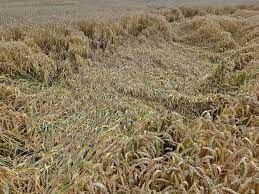UPSC Daily Current Affairs- 12th April 2023 | Current Affairs & Hindu Analysis: Daily, Weekly & Monthly PDF Download
GS-I
Earth4All Initiative

Why in News?
Recently published Earth4All Initiative predicted the world’s human population.
About Earth4All Initiative:-
- Earth4All is a collective initiative of leading economic thinkers, scientists, and advocates.
- It is convened by The Club of Rome, the Potsdam Institute for Climate Impact Research, the Stockholm Resilience Centre and the Norwegian Business School.
- It is guided by a Transformational Economics Commission, made up of economic thinkers from across the globe to explore new economic thinking and test the model outcomes.
- Its global campaign aims to make the Earth4All vision a reality, advocating for governments to adopt policies that will enable resilient and healthy societies.
Findings of the Report:-
- The researchers advance two scenarios:
- Too Little, Too Late: predicts that if economic development continues as it has in the last five decades, the world’s population would peak at 8.6 billion in 2050, and decline to 7 billion by 2100.
- The Giant Leap: the researchers conclude that the population will peak at 8.5 billion by 2040 but then rapidly decline to around 6 billion by 2100.
- This will be due to our investments in poverty alleviation, gender equity, education and health, ameliorating inequality, and food and energy security.
- The Earth4All report contradicted the U.N. ‘World Populations Prospects 2022’ report, which predicted that the global population would steadily rise to 10.4 billion in 2080 and then stabilise around that number in 2100.
Indian Scenario:-
- As of 2022, more than half the world’s population lives in Asia.
- China and India are the two most populous countries.
- According to the United Nations Population Fund (UNFPA), while India’s population growth is stabilising, it is still growing at 0.7% Steps taken by India for Stabilising Population
- Mission Parivar Vikas Compensation scheme for sterilization acceptors: Under the scheme, MoHFW provides compensation for loss of wages to the beneficiary.
- Clinical Outreach Teams (COT) Scheme: for providing Family planning services through mobile teams
- Scheme for Home delivery of contraceptives by ASHAs at t doorstep of beneficiaries.
- Family Planning Logistic Management and Information System (FP-LMIS): A dedicated software to ensure smooth forecasting, procurement and distribution of family planning National Family Planning Indemnity Scheme (NFPIS) under which clients are insured in the eventualities of death, complication and failure following sterilization.
- Ensuring quality of care in Family Planning services by establishing Quality Assurance Committees in all states and districts.
Source: The Hindu
Mahatma Jyotiba Phule
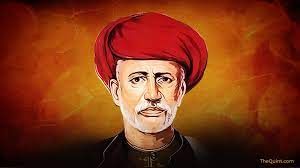
Why in News?
Every year April 11 is celebrated as Jyotiba Phule Jayanti.
Jyotiba Phule
- Jyotirao ‘Jyotiba’ Govindrao Phule was an Indian writer, social activist, thinker and anti-caste social reformer born in the Satara district of Maharashtra in 1827.
- He was bestowed with the honorific Mahatma title by Maharashtrian social activist Vithalrao Krishnaji Vandekar in 1888.
- He is believed to be the first Hindu to start an orphanage for the unfortunate children.
Major Contribution for the Women Empowerment
- Rehabilitation of Widow’s: Jyotiba realised the bad conditions of widows and established an ashram for young widows and eventually became an advocate of the idea of Widow Remarriage.
- Infanticide Prevention: His orphanage was established in an attempt to reduce the rate of infanticide. Along with his longtime friend Sadashiv Ballal Govande and Savitribai, he started an infanticide prevention centre.
- Women Education: At home he began educating his wife Savitribai and opened a girl's school in 1848. No teacher dared to work in a school in which untouchables were admitted as students.
- In 1851, Jyotiba established a girls' school and asked his wife to teach the girls in the school. Later, he opened two more schools for the girls and an indigenous school for the lower castes, especially for the Mahars and Mangs.
Major Contribution for the Rights of Untouchables
- Jyotirao condemned the orthodox Brahmins and other upper castes and campaigned against the authoritarianism of the upper caste people and urged the "peasants" and "proletariat" to defy the restrictions imposed upon them.
- In 1868, Jyotirao decided to construct a common bathing tank outside his house to exhibit his embracing attitude towards all human beings and wished to dine with everyone, regardless of their caste.
- Jyotirao Phule was the first person to coin the term ‘Dalits’ to apply to all people considered lower caste and untouchables by the Brahmins.
- Satya Shodhak Samaj: In 1873, Jyotiba Phule formed the Satya Shodhak Samaj (Society of Seekers of Truth) which undertook a systematic deconstruction of existing beliefs and history, only to reconstruct an equality promoting version.
- He condemned the Vedas, the ancient holy scriptures of the Hindus. He traced the history of Brahmanism through several other ancient texts and held the Brahmins responsible for framing the exploitative and inhuman laws in order to maintain their social superiority by suppressing the "shudras" and “ati shudras” in the society.
- The purpose of the Satya Shodhak Samaj was to decontaminate the society from caste discrimination and liberate the oppressed lower-caste people from the stigmas inflicted by the Brahmins.
- Membership to the Samaj was open to all irrespective of caste and class.
Famous Works
- He wrote well-known books including Gulamgiri (Slavery) and Shetkarayacha Aasud (Cultivator’s Whipcord).
- He also penned some stories like ‘Tritiya Ratna’, ‘Brahmananche Kasab’, ‘Ishara’.
- He wrote dramas like ‘Satsar’ Ank 1 and 2, which were enacted under his directives to spread awareness against social injustice.
- He also wrote books for the Satyashodhak Samaj that dealt with the history of Brahminism and outlined Puja protocols that the lower caste people were not allowed to learn.
Source: PIB
GS-II
Bharat Gaurav scheme

Why in News?
The Indian Railways announced recently, that it will operate a tourist train to Kashmir Valley under the Bharat Gaurav scheme.
About the Bharat Gaurav scheme:-
- Indian Railways(Ministry of Railways) launched the operation of the theme-based Bharat Gaurav train in 2021.
- It was announced under the theme-based tourist circuit trains.
- These trains will be run, by both private players and IRCTC.
- Under the scheme, now trains have a third segment for tourism.
- Till now, the Railways had passenger segments and goods segments.
- These trains are not regular trains that will run as per a timetable.
- It will be more on the lines of the Ramayana Express being run by the IRCTC.
- The train originates from Coimbatore.
- Tourists can board it at Erode, Salem, Dharmapuri, Hosur, Yelahanka, Perambur, Vijayawada and Warangal.
- Objective: to showcase India’s rich cultural heritage and magnificent historical places to the people of India and the world, through Bharat Gaurav Trains.
- According to the Bharat Gaurav policy, any operator or service provider, or virtually anyone, can lease trains from Indian Railways to run on a theme-based circuit as a special tourism package.
- The tenure: a minimum of two years and a maximum of the codal life of the coach.
Source: The Hindu
Recognition of National or State Party
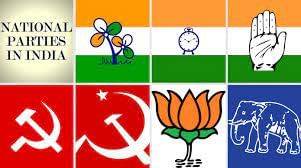
Why in News?
Recently, the AAP was given the status of a ‘national party’ by the Election Commission (EC).
- The EC also revoked the ‘national party’ status of the All India Trinamool Congress, Nationalist Congress Party (NCP) and the Communist Party of India (CPI).
- The Commission also revoked the state party status granted to few other state parties.
What is a National Party?
- The name suggests that a national party would be one that has a presence ‘nationally’, as opposed to a regional party whose presence is restricted to only a particular state or region.
- National parties are usually India’s bigger parties, such as the Congress and BJP.
- However, some smaller parties are also recognised as national parties.
- A certain stature is sometimes associated with being a national party, but this does not necessarily translate into having a lot of national political clout.
- Some parties, despite being dominant in a major state and having a major say in national affairs, remain regional parties.
Criterion for recognition
- The ECI has laid down the technical criterion for a party to be recognised as a national party.
- A party may gain or lose national party status from time to time, depending on the fulfilment of these laid-down conditions.
- As per the ECI’s Political Parties and Election Symbols, 2019 handbook,
- A political party would be considered a national party if:
- It is ‘recognised’ in four or more states; or
- If its candidates polled at least 6% of total valid votes in any four or more states in the last Lok Sabha or Assembly elections and has at least four MPs in the last Lok Sabha polls; or
- If it has won at least 2% of the total seats in the Lok Sabha from not less than three states.
- To be recognised as a state party, a party needs:
- At least 6% vote-share in the last Assembly election and have at least 2 MLAs; or
- have 6% vote-share in the last Lok Sabha elections from that state and at least one MP from that state; or
- At least 3% of the total number of seats or three seats, whichever is more, in the last Assembly elections; or
- At least one MP for every 25 members or any fraction allotted to the state in the Lok Sabha; or
- Have at least 8% of the total valid votes in the last Assembly election or Lok Sabha election from the state.
AAP’s current position
- The AAP is in power with big majorities and very large vote shares
- In Delhi and Punjab. And in the Goa Assembly elections held in March, it received 6.77% of the vote.
- State party:
- This meant that going into the Gujarat-Himachal elections, the party already fulfilled the criteria for recognition as a state party in three states.
- It now required 6% of the vote in the Assembly elections in either Himachal or Gujarat to be recognised in a fourth state — which would qualify it for recognition as a national party.
- While the AAP got only 1% of the vote in Himachal, the almost 13% vote it got in Gujarat was more than double required to be recognised as a state party there.
- This meant that going into the Gujarat-Himachal elections, the party already fulfilled the criteria for recognition as a state party in three states.
Source: IE
GS-III
What is Cost Inflation Index (CII)?
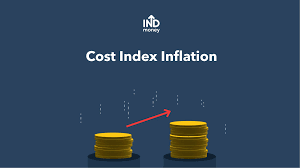
Why in News?
Recently, The Income Tax Department has notified the Cost Inflation Index for the current fiscal beginning April 2023.
About Cost Inflation Index (CII):
- CII number is used to adjust the purchase price of assets on the basis of inflation.
- The CII number helps an individual to ascertain the inflation-adjusted current price of an asset.
- This helps in calculating capital gains from a transfer or sale of capital assets after taking inflation into account.
- Capital gain refers to the profit acquired from the sale/transfer of any capital assets, including land, property, stocks, shares, trademarks, patents, etc.
- It helps taxpayers offset the impact of inflation as the difference between the purchase and sale price could be substantial due to rising prices.
- The application of the Cost Inflation Index for capital gain adjusts the purchase price of assets based on their sale price, resulting in smaller earnings and a lower tax amount.
- Till FY 2022-23 (ended on March 31, 2023), the CII number was used to calculate the long-term capital gains from non-equity mutual fund schemes.
- But from FY 2023-24, the indexation benefit on long-term capital gains from non-equity mutual fund schemes has been removed.
- A taxpayer will continue to use the CII number to calculate long-term capital gains from house property, land, and building in the event of a sale.
- What is the formula to calculate inflation-adjusted purchase price?
- CII number is used to calculate the inflation-adjusted price of a long-term asset. To calculate the inflation-adjusted price, the CII is used in the following manner,
- Inflation-adjusted price = (CII of the sale year/CII of the purchase year) * Actual price of the asset.
Source: Economic Times
Effect of Rains on Wheat Crop
Why in News?
The unusual rise in heat followed by an untimely spell of widespread rain left wheat-growing farmers worried.
Wheat and its cultivation in India
- It is Rabi Crop and is the main cereal crop in India.
- It has wide adaptability. It can be grown not only in the tropical and subtropical zones but also in the temperate zone and the cold tracts of the far north, beyond even the 60-degree north altitude.
- It can tolerate severe cold and snow and resume growth with the setting in of warm weather in spring
- It is sown in October-December and harvested during April-June.
- Soil: It is grown in a variety of soils in India.
- Soils with a clay loam or loam texture, good structure, and moderate water-holding capacity are ideal for wheat cultivation.
- Wheat-growing states in India: Uttar Pradesh, Punjab, Haryana, Madhya Pradesh, Rajasthan, Bihar, and Gujarat
Impacts and Concerns Related to recent weather events
- According to the IMD, fairly widespread rains along with stormy winds lashed several parts of the major wheat-growing States in the country under the influence of consecutive western disturbances.
- Wheat is sensitive to both heat stress and rain/ thunderstorms during the terminal grain filling and ripening period.
- When accompanied by high-velocity winds, make the stems prone to “lodging” or bending and even falling flat on the ground.
- The crop damage scenario also comes against the backdrop of persisting high inflation and food security woes globally amid geopolitical uncertainties.
- The Centre is optimistic that wheat production would be close to 112 MT on account of an increased acreage (area) of wheat and better yield this season, despite a slight production loss due to recent adverse weather conditions.
- A sizable section of farmers asserts that the inclement weather has adversely damaged the standing wheat crop.
- Moreover, if the country’s wheat production drops below the government estimate it could lead to a hike in prices of wheat and wheat-based products in the domestic market,
- Any decline in wheat production can also lead to a potential foodgrain security issue.
- If the production is less, then the possibility of market intervention by the government is also quite bleak as its priority would be to maintain the buffer stock.
Source: IE
Amolops siju
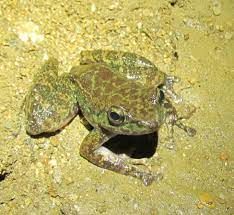
Recently, researchers from the Zoological Survey of India have discovered a new species of frogs from deep within the Siju cave system in the South Garo Hills district of Meghalaya.
About Amolops siju:
- It has been named after the Suji cave where it was discovered.
- It belongs to the cascade Ranidae family and genus Amolops.
- Genus Amolops is among the largest groups of ranid frogs (family Ranidae) with 73 known species widely distributed across India’s North East and north, Nepal, Bhutan, China, the Indochina region and the Malaya Peninsula.
- Cascade frogs are named so because they prefer small waterfalls.
- It is the second time that a frog was discovered from inside a cave in the country, the first being the discovery of the Micrixalus spelunca in 2014 from a cave in Tamil Nadu.
Key facts about the Suji caves
- It is one of the longest cave systems in the world situated in the state of Meghalaya.
- It is a 4 km long natural limestone cave.
Source: The Hindu
|
63 videos|5408 docs|1146 tests
|
FAQs on UPSC Daily Current Affairs- 12th April 2023 - Current Affairs & Hindu Analysis: Daily, Weekly & Monthly
| 1. What is the significance of the GS-I, GS-II, and GS-III exams in UPSC? |  |
| 2. How can I prepare for the GS-I exam in UPSC? |  |
| 3. What are the key topics covered in the GS-II exam of UPSC? |  |
| 4. How can I stay updated with current affairs for the GS-III exam in UPSC? |  |
| 5. Are there any specific strategies to tackle the GS-II exam in UPSC? |  |

